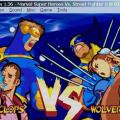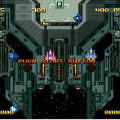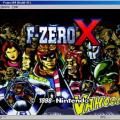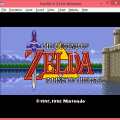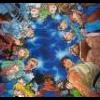- 0 replies
- 2,418 views
- Add Reply
- 0 replies
- 1,382 views
- Add Reply
- 0 replies
- 2,606 views
- Add Reply
- 0 replies
- 1,358 views
- Add Reply
Virtual Aquarius v0.72 Released
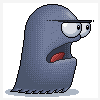
Emu#dreams reports that Virtual Aquarius, the Radofin Electronics Aquarius Home Computer System emulator for Microsoft Windows, has been updated to version 0.72. Below are the changes in this version.
- Added ROM, cassette, and Quicktype images from several different sources.- Util/WAV->CAQ logger. It's enabled if ROM Hacks are enabled. With this selected, the emulator will write out a CAQ file for WAV data it attempts to read during a normal cload/cload* operation. Please note that cload truncates files when it reaches some number of nulls. Also, cload* truncates files when it reaches the end of the array it's loading. And, of course, the Aquarius tape format has no checksums or qualtiy-of-data checks, so it's entirely possible for framing errors to occur and you'd never know about it. Caveat Emptor. You might want to wait for someone to write a real WAV2CAQ utility.
- Slightly changed WAV file handling, which, I hope, makes it more like the real computer. The real computer won't change state unless the input level hits a certain point, which smoothes out noise. Also, previous versions of the emulator were reading the waveform inverted; that's been fixed.
- Fixed WAV loading to recognize WAVs written by programs that don't do the header right (which unfortunately includes most sound editors, but not the one I use so I didn't know about this problem).
- The power up beep now works reliably. The emulation is now delayed until well after the window appears on the screen, but you didn't need to know that.
- Full Screen mode can now access the menus. Right click on the full screen to toggle menus.
- ROM Hacks are enabled by default. ROM Hacks provide emulation trapping for faster I/O for cassette input, cassette output, and printer output. This feature is available only when using the built-in S2 ROM.
- Save RAM behavior changed; now the file is saved to the directory the program was run from.
- Save RAM behavior changed; now filters memory through the cartridge scrambler.
- Fixed a bug in which bringing up a dialog box would zero the AY sound registers.
- You can't turn off the border any more. On the plus side, you got Full Screen mode. On the minus side, you need a better computer to run Virtual Aquarius. But then, your computer is probably newer than mine anyway (mine is from, like, 1998), and mine runs it just fine.
- The sound buffers will attempt to resynch themselves when no sound has been playing for a while (a half-second or so). This is detected by the speaker clicker not being written to and by the three AY chip volumes being set to 0.
- The POV hat can be used as the control disk in a modern USB joypad.
- The Help/About box has my newer pictures on it.
- Util/Load Binary -- This is useful for assembly language program development.
- Util/Screenshot (F11)
- Util/Full Screen mode (F12 to toggle)
- Util/Paste -- this Quicktypes text that was on the text clipboard, i.e. Copy from Notepad and Paste onto Virtual Aquarius.
- Some file access routines are smarter about remembering which file you were using last. It takes getting used to, but it really is better than before. Really.
- The emulator should no longer crash when you have Configure/System Timing>Speed up when accessing files checked.
- Soft Reset is now F9 on the keyboard.
- Hard Reset is now Shift F9 on the keyboard.
You can visit the official homepage here, or simply download it here.
Emulator2001 Updated (12/31)

AEP Emulation Page reports that Emulator2001, the Emerson Arcadia 2001 emulator (as well as other systems) for Microsoft Windows, has been updated. Below are the changes in this version.
- minor improvement to in-line block mode switch correcting jumpbugs fuel bar
You can visit the official homepage here, or simply download it here.
olafds v0.1 Released

I am publicly releasing a little project I call: olafds. Below is information on olafds (taken from the homepage I've created for it).
olafds is a nintendo ds emulator that does nothing more than emulate the nintendo ds's wifi capabilities. this program is used to communicate with other microsoft windows applications as though it were a nintendo ds (for those without a nintendo ds or without the proper utilities for the nintendo ds). examples of these types of applications would be: stephen stair's udp test program or infernods's ds chat.
You can visit the official homepage here, or simply download it here.
MESS v0.103 Released

Emu#dreams reports that the Microsoft Windows port of MESS, the Multiple Emulator Super System, has been updated to version 0.103. Below are the changes in this release.
System Driver Changes- [ADVISION] Added sound support. [Dan Boris]
- [AMIGA] Fixed regression introduced in MESS 0.102. (bug #801) [Nate Woods]
- [APPLE2P] Fixed BIOS. (bug #820) [Nick Westgate]
- [ARCADIA] Added support for 12k cartridges, fixed a buffer overrun and enhanced sound generation. [irving Gould]
- [AT486] Fixed regressions introduced in MESS 0.102. [Nate Woods]
- [C128] Fixed regressions introduced in MESS 0.102. [Nate Woods]
- [DGNBETA] Implemented MMU, keyboard and floppy support. [Phill Harvey-Smith]
- [GAMEBOY] Fixed several games that did not loard properly. (bug #116) [Wilbert Pol]
- [NES] PPU, palette reading, mapper and sprite handling enhancements and implemented some undocumented N2A03 opcodes. (bugs #810, #811) [Rob Bohms]
- [NES] Switched to use the MAME NES APU implementation. [R. Belmont]
- [PCE] Added imperfect sound. [Rob Bohms]
- [sGI] Added a harddisk to the ip22 systems. [R. Belmont]
- [sNES] Fixed save RAM to store and save properly, improved memory mapping improved raster timing, added HIRQ support and better VIRQ support, improved joypad support, DSP-1 support (including all subtypes), Counter latching support, fixed OAM read/write. [R. Belmont]
User Interface Changes
- [Windows GUI] Fixed a bug that prevented column width changes in the software picker from being saved. (bug #589) [Nate Woods]
- [Windows GUI] Fixed a bug that caused "ghost filenames" to be introduced when using images with spaces in the filename. (bug #784) [Nate Woods]
- [Windows GUI] Fixed a bug that could cause clones to not be ran due to software settings "spilling" over onto the clones. (bug #704) [Oliver
Stoeneberg]
Imgtool Changes
- Implemented a feature that allows filters to qualify files, to see if they are appropriate for any given filter. [Nate Woods]
- Updated Mac module; moved to floppy abstraction system, as well as support for directories and filters. MFS disk image creation now works. [Nate Woods]
- Added support for modules to specify specific for icons. Enhanced the Mac module to support this feature. [Nate Woods]
- [imgtool] Changed the Imgtool "put" command to require a destination argument, like the UNIX "cp" command. This is so that a directory argument can be properly specified. [Nate Woods]
- [imgtool] Added the ability to get and put the boot block, as if it was a
file called "??BOOT??". The FAT module has been enhanced to support this feature. [Nate Woods]
- [Windows Imgtool] The insert file dialog will no longer let the user specify a file that does not exist (which was allowed, but eventually resulted in an error.) Also, fixed a few cosmetic errors. [Nate Woods]
- [Windows Imgtool] The disk title is now displayed on the title bar, if present. [Nate Woods]
Source Changes
- The core is based on MAME 0.103. This incorporates all features of the update to this core. [MAME team]
- Changed generic cartridge loading so that a ROM_LOAD_CART declaration can be placed in a ROM_REGION. This change makes cartridge loading be specified similar to BIOS loading, and makes things cleaner and more declarative. [Nate Woods]
- Makefile tweaks. (bug #819) [Oliver Stoeneberg]
- Added mandatory attribute to the device tags on the -listxml data. [Nate Woods]
- Pruned out some redundant PORT_NAME declarations. [Justin Kerk]
- [Messtest] Added a trace command, to emit debug traces. [Nate Woods]
You can visit the official homepage of MESS here.

